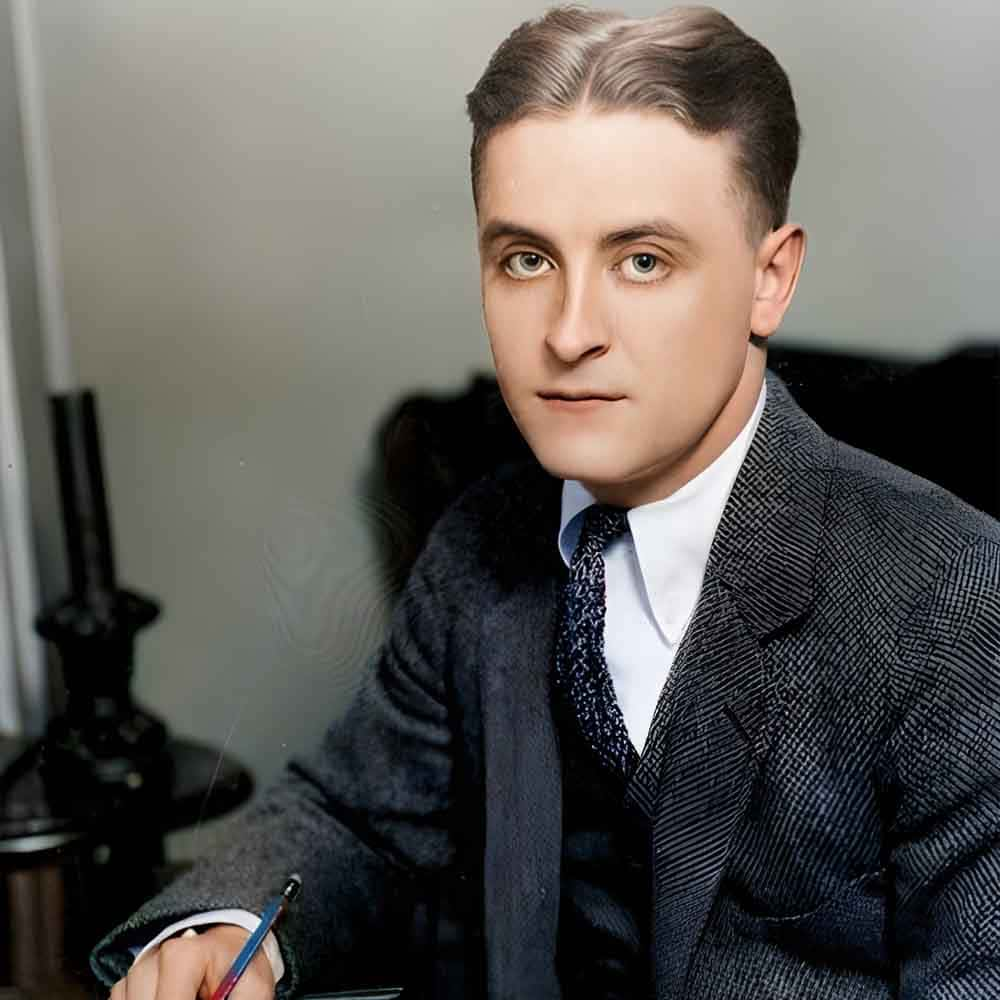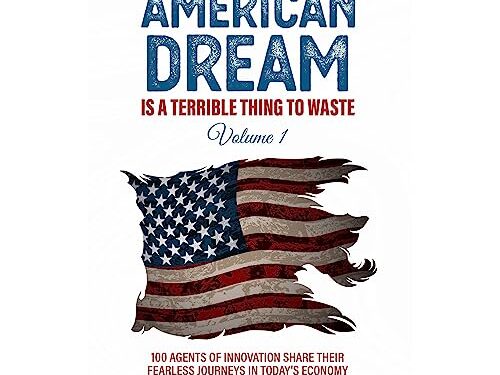The novel “The Great Gatsby” by F. Scott Fitzgerald critically analyzes the idea of the “American Dream.” In addition to depicting the lives of its protagonists, this classic piece of American literature offers commentary on the excess and disillusionment that characterized the Roaring Twenties—a time when many people were chasing the American Dream.
The American Dream in the Roaring Twenties:
The Roaring Twenties, a period of economic prosperity and cultural transformation in the United States, is the backdrop against which “The Great Gatsby” unfolds. This era is often associated with the American Dream, a concept that embodies the idea of upward mobility, success, and the pursuit of happiness through hard work and determination. It is a dream deeply rooted in the nation’s history and ideals, promising a better life and limitless opportunities to those willing to strive for them. In the 1920s, the American Dream took on new dimensions as material wealth and excess came to the forefront.

Characters and Their Pursuit of the American Dream:
Throughout the novel, we see various characters striving for their version of the American Dream, and Fitzgerald uses their experiences to shed light on the complexities and pitfalls of this pursuit.
- Jay Gatsby: The titular character, Jay Gatsby, epitomizes the American Dream’s pursuit of success and wealth. Born into modest circumstances, he reinvents himself as a wealthy and mysterious figure, hosting extravagant parties and accumulating wealth in the hope of winning back his lost love, Daisy Buchanan. Gatsby’s life and fortune symbolize the possibility of self-transformation and success. However, his single-minded obsession with the past and his unrealistic pursuit of an idealized vision of love ultimately lead to his tragic downfall.
- Daisy Buchanan: Daisy is emblematic of those who achieve the material trappings of the American Dream. She is married to Tom Buchanan, a wealthy and influential man, and lives in luxury. Yet, she is also unhappy and trapped in a loveless marriage. Daisy represents the emptiness that can be found at the heart of a life driven solely by the pursuit of material success.
- Tom Buchanan: Tom, Daisy’s husband, is a symbol of the established American elite. He enjoys the privileges of inherited wealth and social status. However, he is arrogant, racist, and unfaithful. Tom’s character illustrates that the American Dream, when achieved at the expense of others, can lead to moral decay and a lack of empathy.
- Myrtle Wilson: Myrtle, Tom’s mistress, represents the lower social strata’s aspirations for the American Dream. She is married to George Wilson, a mechanic, but aspires to a life of wealth and luxury. Myrtle’s pursuit of the Dream leads her into an affair with Tom and, ultimately, to a tragic end.
- George Wilson: George, Myrtle’s husband, works tirelessly to achieve his version of the American Dream: financial success and a better life for himself and his wife. However, his pursuit is futile, and he remains trapped in the Valley of Ashes, highlighting the disparity between the Dream’s promise and the reality of economic inequality.
The Illusory Nature of the American Dream:
Fitzgerald’s portrayal of these characters and their experiences serves to critique the American Dream’s illusory nature. The novel suggests that the Dream, as pursued in the 1920s, often leads to disillusionment and moral decay rather than genuine happiness and success. The lavish parties, extravagant displays of wealth, and material excess that pervade the story are, in many ways, a facade that conceals the emptiness and corruption beneath.
- Gatsby’s Pursuit of the Past: Gatsby’s obsession with an idealized past and his relentless pursuit of Daisy, who represents that past, demonstrate the inherent flaw in his version of the American Dream. He believes that material wealth and social status alone will secure his happiness, yet he is unable to let go of his romanticized vision of the past, leading to his eventual downfall.
- The Moral Decay of the Wealthy Elite: Tom and Daisy Buchanan, who seemingly have everything the American Dream promises, are morally bankrupt. They are careless and selfish, causing harm to others without consequence. Their wealth does not lead to happiness but rather exacerbates their moral decay.
- The Hollow Pursuit of Myrtle: Myrtle’s affair with Tom and her desire for a more luxurious life ultimately lead to her tragic death. Her pursuit of the Dream is hollow, and she becomes a victim of the very desire she chases.
- The Inequality and Hopelessness of George Wilson: George Wilson’s futile pursuit of the American Dream highlights the stark economic inequality in society and the hopelessness that can result from chasing an unattainable goal.
The Green Light and the Unattainable Dream:
A recurring symbol in the novel is the green light at the end of Daisy’s dock, which Gatsby gazes at longingly. The green light represents the unattainable Dream, forever just out of reach. It symbolizes the belief that success and happiness can be achieved through the pursuit of an idealized past or a materialistic future, even though they remain elusive.
Also Read-
Discuss the theme of disillusionment in F. Scott Fitzgerald’s The Great Gatsby
Analyze the use of symbolism in F. Scott Fitzgerald’s The Great Gatsby
How does F. Scott Fitzgerald use the concept of the American Dream in The Great Gatsby
Fitzgerald’s use of the green light underscores the theme that the American Dream, as it is often conceived, is an unattainable ideal. The Dream can never be fully realized because it is based on illusions, unrealistic expectations, and the pursuit of fleeting pleasures.
The Influence of Society and Culture:
Fitzgerald also critiques the society and culture of the 1920s, which encouraged the pursuit of material success and the idea that one could achieve their dreams through external markers of wealth and social status. The characters in the novel are products of this culture, where excess and ostentation were valued. This societal influence contributes to the characters’ flawed pursuit of the Dream.
The Tragic Outcome:
“The Great Gatsby” ultimately ends in tragedy. Gatsby’s death and the other characters’ unhappy fates serve as a cautionary tale about the perils of a Dream pursued with misguided values and an obsession with the past. The novel conveys the idea that the Dream, when it becomes an all-consuming force, can lead to personal and societal destruction.
Conclusion
F. Scott Fitzgerald’s “The Great Gatsby” is a gripping examination of the American Dream set against the backdrop of the Roaring Twenties. The book offers a critical analysis of the Dream’s many dimensions and deceptive nature. The book emphasizes the catastrophic outcomes, moral deterioration, and disillusionment that can result from chasing the American Dream through the characters of Jay Gatsby, Daisy and Tom Buchanan, Myrtle, and George Wilson. The green light at Daisy’s dock’s end is a moving representation of the Dream’s impossibility, highlighting the contrast between the hope of achievement and the practicality of pursuing it.
Fitzgerald’s work challenges readers to reflect on the values and societal influences that shape the American Dream. It ultimately cautions against the single-minded obsession with materialism and the past, offering a somber critique of a society driven by excess and superficiality. “The Great Gatsby” remains a timeless and thought-provoking commentary on the American Dream and its often elusive and misleading promises.
FAQ.
What is the American Dream in “The Great Gatsby”?
The American Dream in the novel represents the pursuit of success, happiness, and upward mobility through hard work, determination, and self-improvement. In the context of the Roaring Twenties, it often involves the pursuit of material wealth and social status.
How does “The Great Gatsby” critique the American Dream?
The novel critiques the American Dream by portraying characters who, despite achieving elements of the Dream, experience disillusionment, moral decay, and tragic consequences. It highlights the illusory nature of the Dream and the dangers of obsession with materialism and the past.
What is the significance of the green light in the novel?
The green light at the end of Daisy’s dock symbolizes the unattainable nature of the American Dream. It represents the idea that success and happiness are just out of reach, emphasizing the gap between the Dream’s promise and its reality.
How does the societal and cultural context of the 1920s influence the characters’ pursuit of the American Dream?
The societal and cultural context of the 1920s, characterized by excess and materialism, influences the characters’ values and aspirations. The culture of the time encourages the pursuit of wealth and social status, which is reflected in the characters’ behavior and choices.
What is the ultimate message of “The Great Gatsby” regarding the American Dream?
The novel’s message is that an obsessive pursuit of the American Dream, particularly when driven by materialism and the idealization of the past, can lead to disillusionment, moral decay, and personal tragedy. It challenges readers to reevaluate the values and goals that underpin the Dream.
Why is “The Great Gatsby” considered a classic American novel?
“The Great Gatsby” is considered a classic American novel because it captures the spirit of the Roaring Twenties and provides a powerful critique of the American Dream and the societal values of the time. Its themes, characters, and symbolism continue to resonate with readers and offer profound insights into American society and culture.














